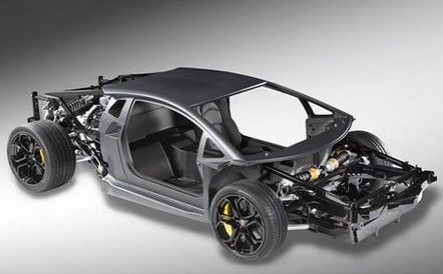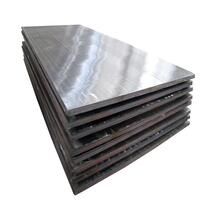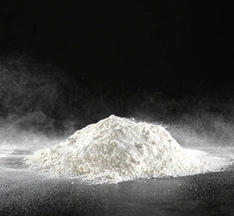1. Introduction
Ever seen a sleek modern building with a shimmering steel facade or a rustic home wrapped in weathered corten steel siding? Chances are, you’re looking at a metal clad structure. But ‘metal clad’ isn’t just about aesthetics—it’s a broad term that spans architecture, electrical engineering, and industrial materials. Whether it’s a metal clad house, a clad metal pipe, or even metal clad electrical wire, this technology combines performance, durability, and style.

In this guide, we’ll unpack what ‘metal clad meaning’ really entails, explore popular types like zinc clad roofs and aluminum clad steel, and highlight real-world uses—from standing seam siding to boiler plate steel.
2. What Does ‘Metal Clad’ Mean?
At its core, ‘clad metal meaning’ refers to a composite material made by bonding two or more different metals together. This process—often achieved through roll bonding, explosion bonding, or electroplating—creates a material that leverages the best properties of each metal. For example, stainless clad aluminum offers the corrosion resistance of stainless steel with the lightweight nature of aluminum.
The term ‘metalclad’ (often written as one word in technical contexts) is used across industries. In construction, it describes exterior finishes like metal clad wall systems. In electrical work, it refers to armored cables like metal clad wire. And in manufacturing, it includes everything from titanium clad plates to copper nickel clad sheets.
3. Common Types of Clad Metals
Clad metals come in countless combinations, each engineered for specific performance needs:
- Aluminum clad stainless steel: Combines the strength of stainless with aluminum’s light weight and thermal conductivity.
- Stainless clad aluminum: Often used in heat exchangers and aerospace applications.
- Titanium clad: Offers exceptional corrosion resistance for chemical processing equipment.
- Copper siding and zinc metal siding: Popular for architectural exteriors due to their natural patina and longevity.
- Alloy clad options like 2024 T3 clad and 7075 T6 clad are common in aviation for high strength-to-weight ratios.
These materials are distinct from simple coatings—they involve metallurgical bonding, ensuring structural integrity and long-term performance.

4. Metal Clad in Architecture and Construction
One of the most visible uses of metal clad is in building design. A metal clad building can feature anything from a corrugated steel facade to a refined standing seam facade.
Popular choices include:
- Corten steel facade: Known for its rust-like appearance that stabilizes over time, requiring no painting. Corten steel siding cost varies but offers low maintenance and dramatic visual impact.
- Zinc clad dormer and zinc clad roof: Elegant, self-healing surfaces that age gracefully.
- Colorbond standing seam and PAC Clad standing seam roof systems: Durable, weather-tight solutions for modern homes and commercial structures.
- Exterior corrugated metal siding and metal weatherboard: Affordable, rugged options for sheds, barns, and contemporary homes.
Vertical standing seam metal siding and PAC Clad column covers are also gaining traction for their clean lines and resilience. Whether it’s a steel clad house or a metal clad shed, these systems provide excellent protection against the elements.
5. Metal Clad in Electrical and Industrial Applications
Beyond architecture, metal clad plays a critical role in infrastructure. Metal clad electrical wire—also called armored cable—is widely used in commercial buildings (including in Pennsylvania) for its fire resistance and mechanical protection.

Other industrial uses include:
- Aluminum clad pipe insulation: Enhances thermal efficiency in HVAC and process piping.
- Aluminum clad steel wire and CU clad wire: Used in telecommunications and power transmission.
- Metal clad insulation: Combines reflective barriers with vapor control for energy efficiency.
These applications rely on the durability and shielding properties of metal cladding to ensure safety and performance.
6. Metal Plates and Sheets: The Backbone of Clad Systems
Many clad metals start as base plates or sheets. Common examples include stainless steel plate, mild steel plate, and aluminum plate. Specialized variants like 316 stainless steel plate, 6061 T6 aluminum plate, and corten steel plate serve niche roles in marine, aerospace, and architectural contexts.
You’ll also find functional finishes like:
- Diamond plate steel and aluminum diamond tread plate: Slip-resistant surfaces for stairs and truck beds.
- Perforated plate and metal plate with holes: Used in filtration and acoustic panels.
- Chrome metal, brass plate, and nickel plates: Often used for decorative or wear-resistant applications.
Prices vary widely—steel plate price depends on thickness (e.g., 1/8 inch steel plate vs. 3/16 steel plate), alloy type, and finish. Many suppliers offer steel plate for sale locally or online, including stainless steel checker plate and aluminum checker plate near me.
7. Installation and Maintenance Tips
Installing metal clad systems—whether it’s PAC Clad coping on a roof edge or corrugated steel facade panels—requires attention to detail. Always follow manufacturer guidelines for fastening, sealing, and thermal expansion.
Maintenance is generally minimal. Corten siding cost may be higher upfront, but it eliminates painting needs. Copper and zinc develop protective patinas. For painted systems like Colorbond, occasional cleaning with mild soap and water is sufficient.
8. Conclusion
From the sleek lines of a zinc facade to the rugged reliability of metal clad wire, ‘metal clad’ is far more than a buzzword—it’s a foundational concept in modern materials science. Whether you’re designing a steel clad building, selecting clad metals for industrial use, or simply curious about what metal clad means, understanding these composites unlocks smarter, more sustainable choices. As innovation continues—think inconel weld overlay or electroless nickel finishes—the future of metal clad looks brighter (and stronger) than ever.
Our Website founded on October 17, 2012, is a high-tech enterprise committed to the research and development, production, processing, sales and technical services of ceramic relative materials such as Understand. Our products includes but not limited to Boron Carbide Ceramic Products, Boron Nitride Ceramic Products, Silicon Carbide Ceramic Products, Silicon Nitride Ceramic Products, Zirconium Dioxide Ceramic Products, etc. If you are interested, please feel free to contact us.
